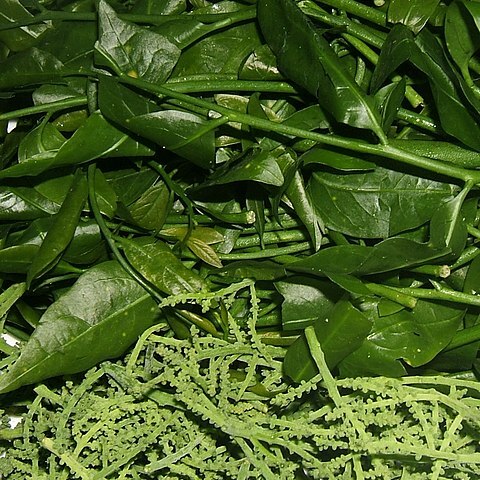A shrub 4-8 m tall. It can grow to 13 m tall. The trunk is 25 cm across. The trunk is straight and cylindrical. The leaves are oval. They are 6-12 cm long by 2.5-5 cm wide. The leaf stalk is 1-3 mm long. The flowers can be in groups of singly. They can grow from branches of in the axils of leaves. The male and female flowers occur on separate trees. They are green. The fruit is fleshy and with a hard stone inside. It is 2.3-3 cm long by 1.5-1.7 cm wide. It is yellow

